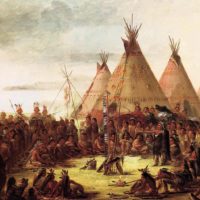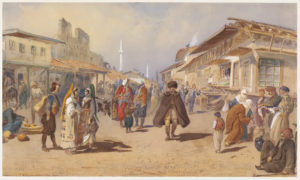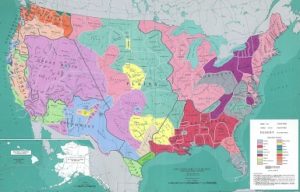Indians, or Native Americans? Both Terms are Misleading

When European explorers first landed on the shores of North America, they mistakenly believed that they had landed in India, hence they began incorrectly calling the indigenous peoples Indians.
Unfortunately, the name stuck, and many people still refer to Native Americans as Indians to this day. While there are a select few Native Americans that refer to themselves as Indians, most prefer to use their tribal names.
While Native American is still the preferred term, it’s just as misleading as the term Indian. Both insinuate a homogeneous population when in fact, there were thousands of tribes at the time European explorers came to the Americas. Many of those tribes did not share a common language and had their own cultures. Some tribes were constantly at war with one another. It is likely for this reason that many indigenous peoples of the Americas prefer to use their tribal names, such as Sioux or Lakota or Apache.

As a general rule of thumb, it’s best to ask whether it’s okay to refer to a Native American as Indian so as to avoid offending the person.
A Diverse Range of Tribes
When Europeans first came to the Americas, Native American tribes were found in all corners of the country.
- The Seneca, Delawares, Iroquois, Mohawk, Cayuga, Algonquin and other tribes inhabited the northeast.
- The Cherokees, Seminoles and Miccusuki inhabited the south.
- The Paiute, Shoshone, Mewuk and other tribes were living in California.
- The Sioux, Apache, Comanches and others were living in the southwest.
Eventually, the Europeans moved westward, pushing the native peoples out of their homeland. Advanced technology and superior numbers prevailed, and the remaining natives were moved onto what is known as Indian reservations.
There are hundreds of reservations across the United States, and unfortunately, many of the natives that live there today are living in poverty. Some tribes have profited off of the natural resources on their lands and are wealthy. Other reservations run thriving tourist businesses.
While many Native Americans still live on reservations today, not all do. There are a great many that have chosen to integrate into America’s dominant culture.

Visiting Reservations
Visiting a reservation is a great way to learn more about the Native American culture. Not all reservations are open to the public, but those that are typically offer a wealth of information. From museums to hotels, cultural exhibits and more, there’s a lot to experience and explore. Some tribes also allow the public to join in on their ceremonies and dances.
Please note that not all reservations are open to the public and many still wish to preserve their culture and privacy of their homes. There are tribes that also prohibit outsiders from joining in on their dances and ceremonies, so please respect their privacy and wishes.
If you cannot visit a reservation, you may be able to attend a powwow. Most powwows are open to the public, and often include ceremonial dancing, drumming, singing and tribes adorned in their native dress.
When attending a powwow or visiting a reservation, remember to be respectful of name preferences. Some may prefer to be called Native Americans and others by their tribal name. If you are unsure, Native American is the most appropriate term to use.

